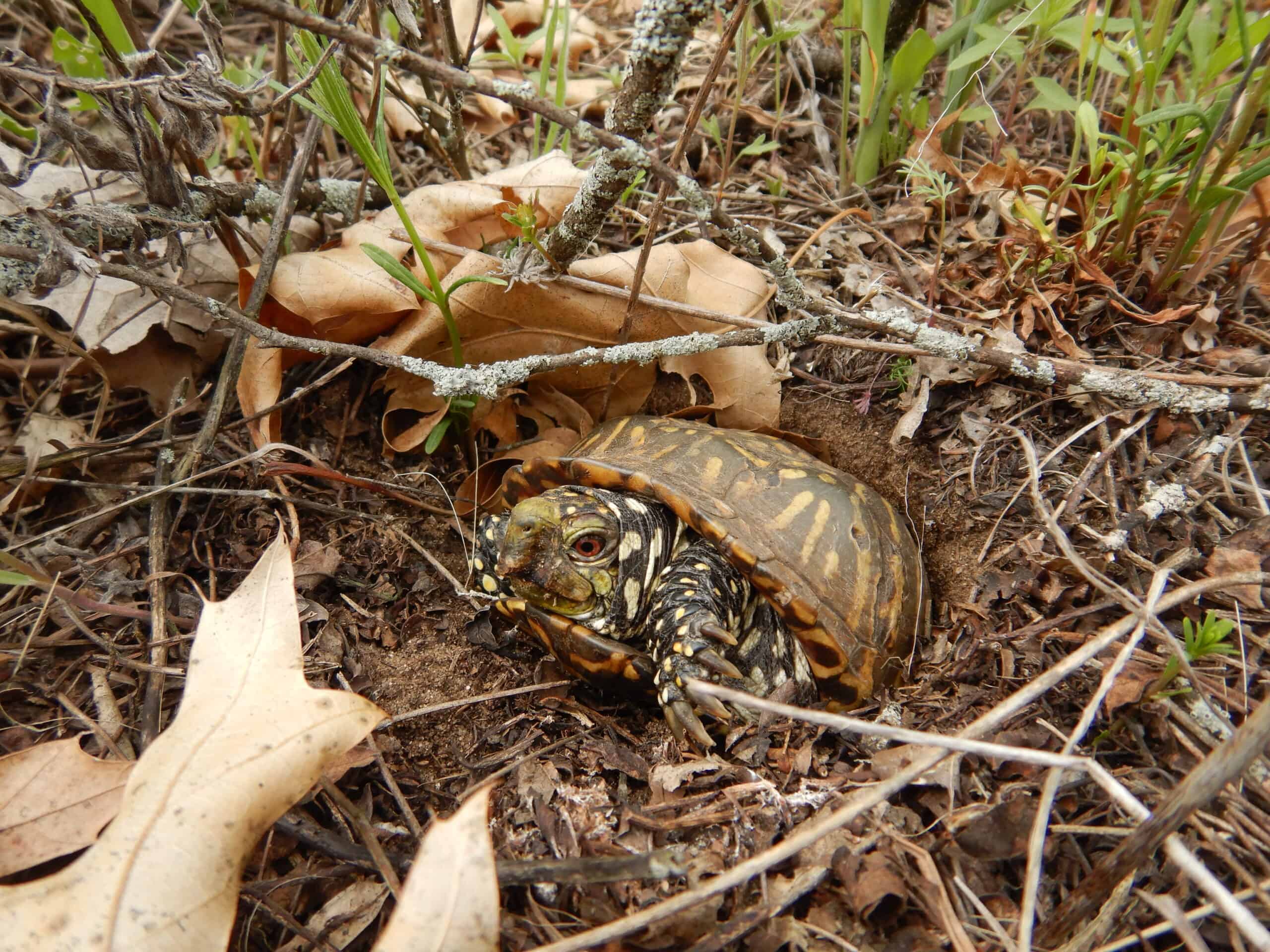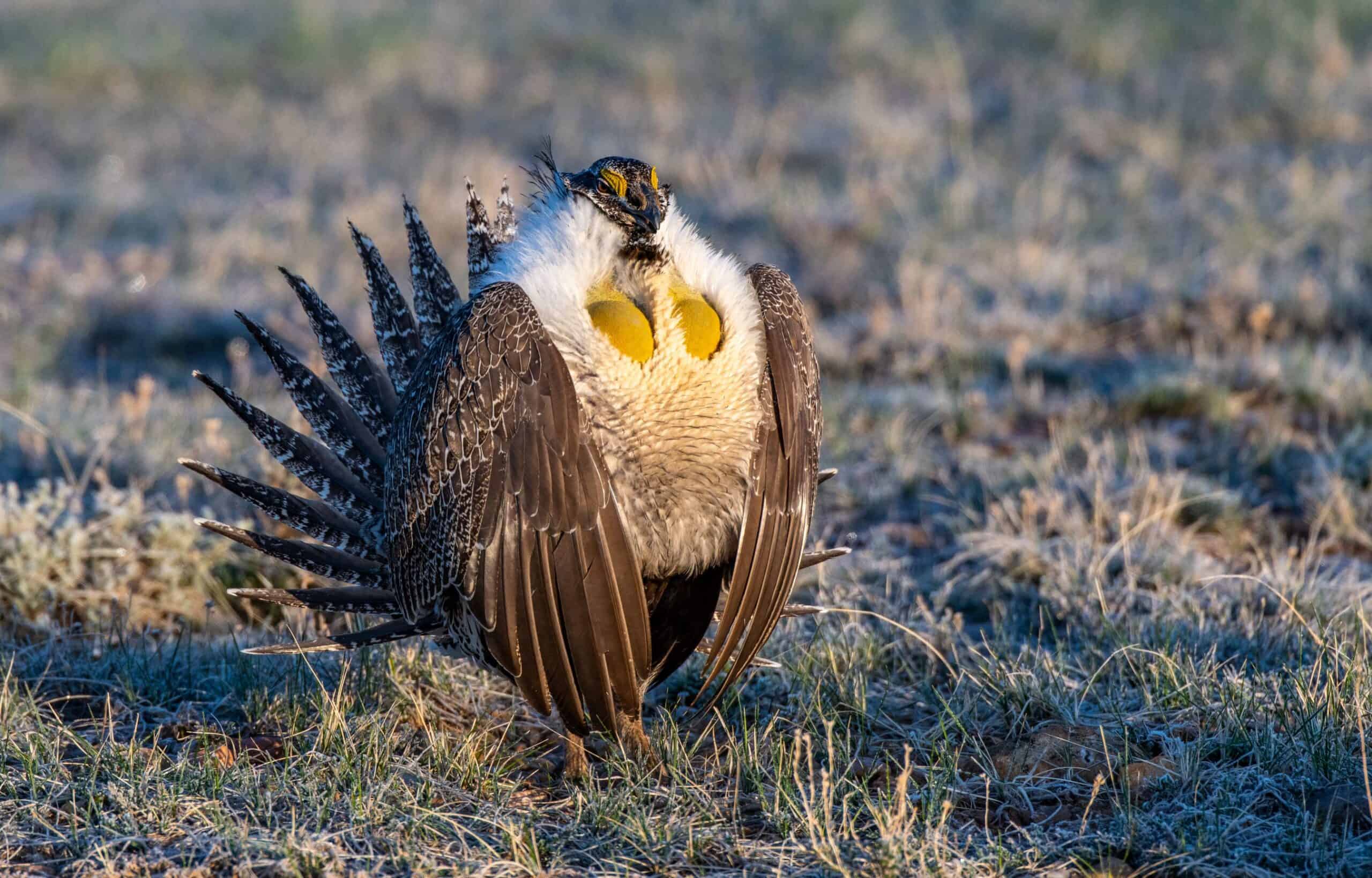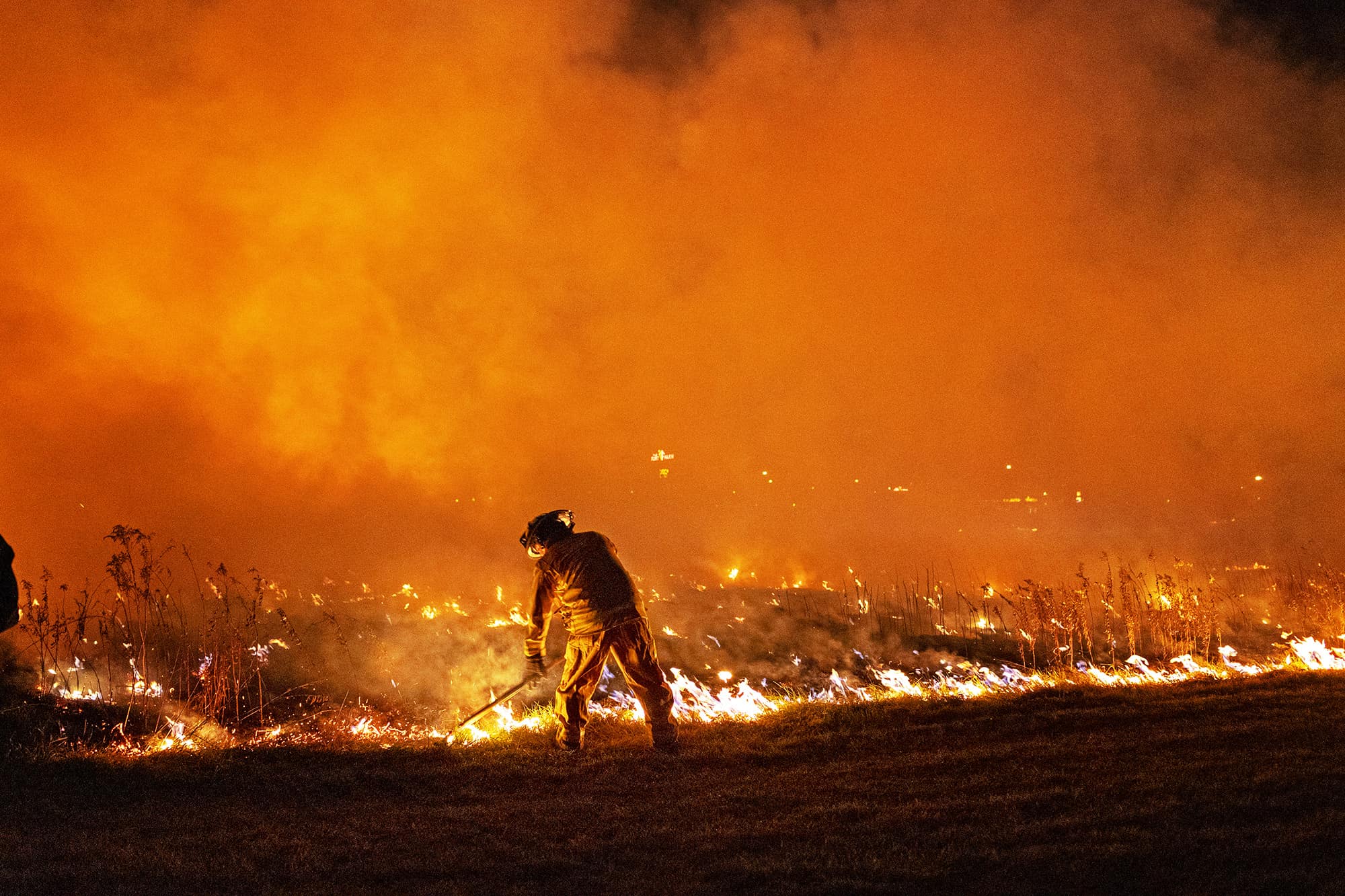Share this article
Wildlife Featured in this article
- Ornate box turtle
JWM: How to limit collateral damage to turtles when burning
Researchers analyzed the best time to prescribe fires in parts of Illinois to avoid undue reptile deaths
Ornate box turtles stay underground when the temperature is too cold—but they still pay attention to the time of year when deciding when to hibernate.
This new information on hibernation habits at the north of these reptiles’ range is useful for wildlife managers to avoid unnecessarily sacrificing turtles when prescribing fires.
“The best predictor was not just date, and not just temperature, but an interaction between temperature and date,” said Devin Edmonds, a PhD candidate at the University of Illinois Urbana-Champaign.
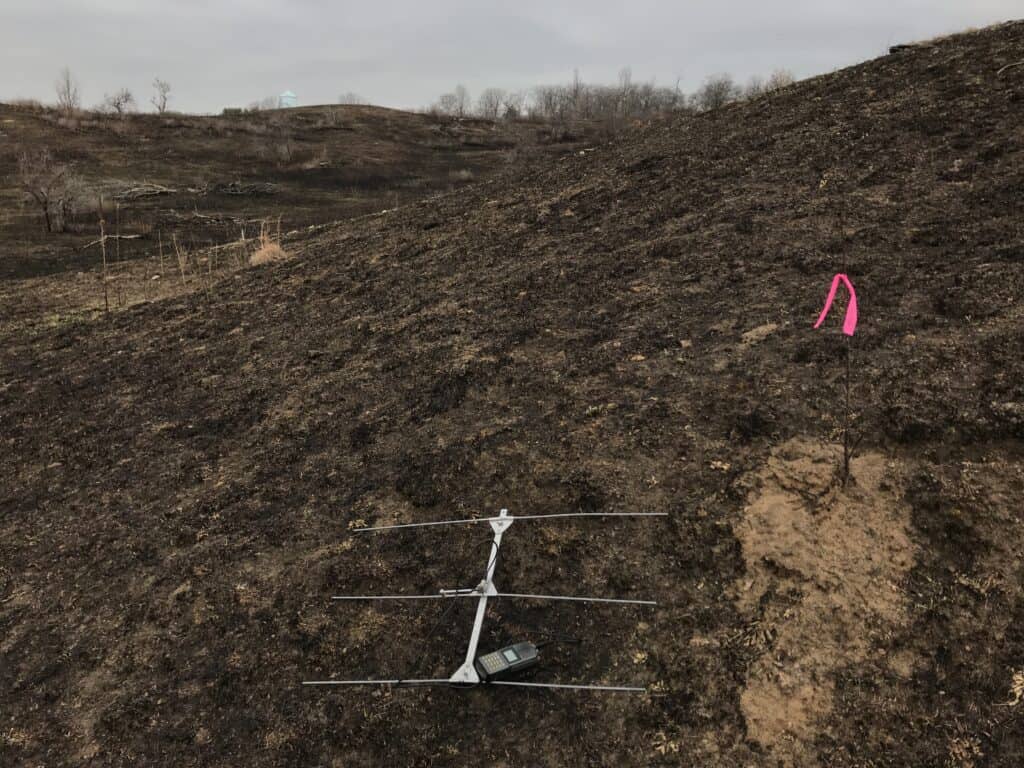
The Illinois Department of Natural Resources (IDNR) prescribes fires in parts of Illinois to maintain ecosystem health and maintain a somewhat natural burn cycle. These fires may occasionally kill ornate box turtles (Terrapene ornata), whose populations are splintered in the northern end of their range in these areas.
“There’s just not a lot of habitat left for them,” Edmonds said.
But if the IDNR burns at the right time, the turtles will still be underground hibernating, where they are usually safe from the flames.
For a study published recently in the Journal of Wildlife Management, Edmonds and his colleagues wanted to learn more about the temperatures and dates ornate box turtles went underground in the fall, and when they emerged from their burrows in the spring. They hope this information can inform the IDNR about the safest times to burn to avoid turtle deaths.

Turtle tracking
The team attached radio-transmitters and temperature loggers to the shells of 30 turtles they captured in three study areas in northeastern Illinois. They then went out turtle watching in the spring and summers from 2019 to 2022, verifying whether the turtles were underground or moving about. They also stuck temperature loggers into the soil at different depths in these areas. Finally, they pulled temperature and rain data from weather stations in the areas.
The researchers then compared the weather data with the time that the turtles had gone underground in the fall, and when they had emerged from hibernation in the spring.
They found that the amount of precipitation and soil temperature didn’t really predict hibernation timing for turtles.
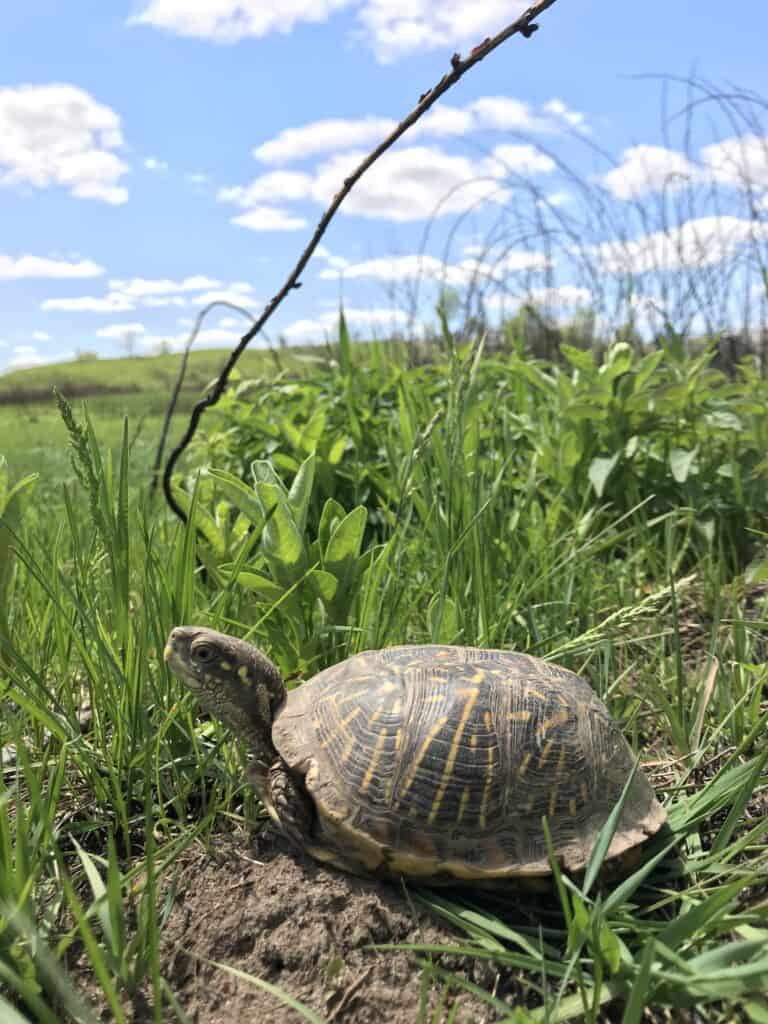
Air temperature did seem to have an impact on hibernation times. But it wasn’t the only factor—the date seemed to matter as well. In other words, even if it stayed warm way into the winter, the turtles would still hibernate, though there was some leeway.
Just the same, they wouldn’t come out of hibernation too early, even if the temperature warmed up a lot sooner than normal. In some cases, they would come out a little early. Similarly, when the spring was chillier, the turtles sometimes stayed in hibernation a little later.
This may make things a little complicated for the IDNR when considering the best burn times. Edmonds said that it will likely need to consider both factors—air temperature and calendar date.
The consideration is important due to the fact that ornate box turtle habitat has become so fragmented at the northern end of their range. When fires burned hundreds of years ago, Edmonds said that a few turtles likely died without influencing the overall population. But soy and corn crops have largely taken over much of this part of Illinois, leaving turtle populations isolated and more vulnerable to fire.
This article features research that was published in a TWS peer-reviewed journal. Individual online access to all TWS journal articles is a benefit of membership. Join TWS now to read the latest in wildlife research.
Header Image: Ornate box turtles hibernate underground for the winter. Credit: Devin Edmonds



